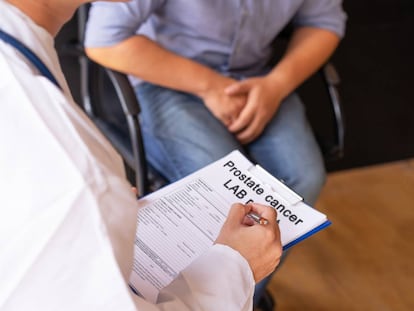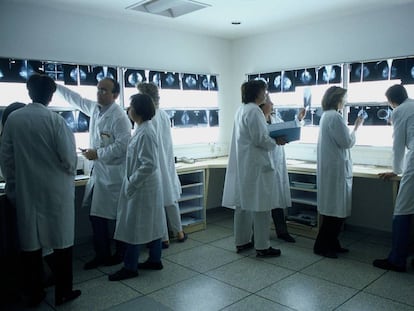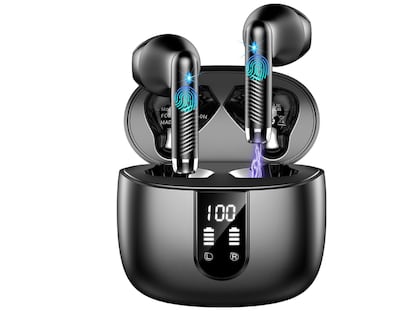Five things men need to know about BPH
Three-quarters of all men will experience the condition by the time they reach the age of 75

Call it an age thing. About one quarter of men will have benign prostatic hyperplasia (BPH) by the time they are 55. And 50% will suffer from the condition once they are over 75. Here are five facts all men should know about their prostate and BPH.
1. What does “hyperplasia of the prostate” mean?
Sometimes a man may hear the term “hyperplasia of the prostate.” This simply means the same thing as BPH or an enlarged prostate. The word “hyperplasia” means an enlargement of an organ or tissue caused by an increase in the reproduction of its cells. Hyperplasia of the prostate indicates that the walnut-shaped gland has grown and could be affecting the male urinary and reproductive systems.
BPH is not linked to prostate cancer
The word benign means “not cancerous.” BPH is not linked to prostate cancer and does not increase the risk of developing prostate cancer even though the symptoms of BPH and prostate cancer are similar.
2. Development and causes of BPH
The causes of BPH are not completely understood. Changes that occur with male sex hormones as part of the aging process may be why a prostate becomes enlarged. Androgens (male hormones) affect prostate growth. The most important androgen is testosterone which is produced in the testes throughout a man’s life.
The prostate coverts testosterone to another powerful androgen called dihydrotestosterone (DHT). DHT stimulates cell growth in the tissue that lines the prostate gland (the glandular epithelium) and is the major cause of the rapid prostate enlargement that occurs between puberty and young adulthood. DHT is a prime suspect in prostate enlargement in later adulthood.
3. Symptoms will get a man’s attention
Generally, BPH is considered a harmless condition unless a man is bothered by the symptoms. Symptoms can include an urgent or frequent need to urinate, slow flow, difficulty starting a urine stream, dribbling or not being able to completely empty the bladder and having to get up frequently during the night to urinate. All men are unique and therefore not all men with BPH will experience these symptoms. The area of the prostate which enlarges will determine if there is any urinary obstruction or not.
4. Simple steps a man can do at home to manage symptoms
Here are some things a man can do that may help reduce how much BPH affects his quality of life:
Treatment for BPH will depend on whether the prostate is continuing to enlarge
- Relax when urinating.
- Practice “double voiding” by urinating as much as possible, relaxing for a few moments, and then urinating again.
- Spread fluid intake throughout the day. Limit fluid intake in the evening if night time urination is a problem.
- If possible, avoid medications that can make symptoms worse. These might include antihistamines, decongestants, allergy pills, antidepressants and pain medicines. Also testosterone including gels, implants or injections. A man should discuss with his doctor regarding these medications and their effect on BPH.
5. Other treatments options are available
Fortunately, there are a range of treatment options available for BPH. A man’s doctor can help him develop a treatment plan to meet his specific needs. If a man has no symptoms or if they are very mild, treatment may not be required. Treatment for BPH will depend on whether the prostate is continuing to enlarge and what symptoms are present. Options for treating BPH include:
- Active surveillance or watchful waiting. This is done if a man has few if any symptoms and the prostate enlargement is stable.
- Medications used for controlling symptoms such as Avodart, Cardura, Uroxatral, Proscar, Cialis, and Flomax.
- Transurethral resection of the prostate (TURP). This surgery is considered to be the optimum treatment for BPH. It reduces symptoms in 80-90% of patients.
- Transurethral needle ablation (TUNA). This procedure involves passing a scope into the urethra and placing needles into the prostate gland. Radio waves pass through the needles heating and destroying excess prostate tissue blocking urine flow.
Dr. Samadi is a board-certified urologic oncologist trained in open and traditional and laparoscopic surgery and is an expert in robotic prostate surgery at Lenox Hill Hospital. He is a medical correspondent for the Fox News Channel's Medical A-Team Learn more at roboticoncology.com. Visit Dr. Samadi's blog at SamadiMD.com. Follow Dr. Samadi on Twitter, Instagram, Pinterest and Facebook.
Tu suscripción se está usando en otro dispositivo
¿Quieres añadir otro usuario a tu suscripción?
Si continúas leyendo en este dispositivo, no se podrá leer en el otro.
FlechaTu suscripción se está usando en otro dispositivo y solo puedes acceder a EL PAÍS desde un dispositivo a la vez.
Si quieres compartir tu cuenta, cambia tu suscripción a la modalidad Premium, así podrás añadir otro usuario. Cada uno accederá con su propia cuenta de email, lo que os permitirá personalizar vuestra experiencia en EL PAÍS.
¿Tienes una suscripción de empresa? Accede aquí para contratar más cuentas.
En el caso de no saber quién está usando tu cuenta, te recomendamos cambiar tu contraseña aquí.
Si decides continuar compartiendo tu cuenta, este mensaje se mostrará en tu dispositivo y en el de la otra persona que está usando tu cuenta de forma indefinida, afectando a tu experiencia de lectura. Puedes consultar aquí los términos y condiciones de la suscripción digital.
Más información
Archivado En
Últimas noticias
Lo más visto
- Uno de los promotores de la señal V-16 de tráfico: “Es duro oír el testimonio de víctimas que han sufrido amputaciones al poner los triángulos”
- Más de 40 congresistas demócratas piden por carta a Trump que cese en sus “intentos de socavar la democracia en Brasil”
- Cae una organización que enviaba camiones cargados de cocaína desde Marbella hasta varios países europeos
- La policía registra varios domicilios y las oficinas de la ministra francesa Rachida Dati por otro presunto caso de corrupción
- Manuel Castells, sociólogo: “El mundo está en un proceso de autodestrucción”






























































